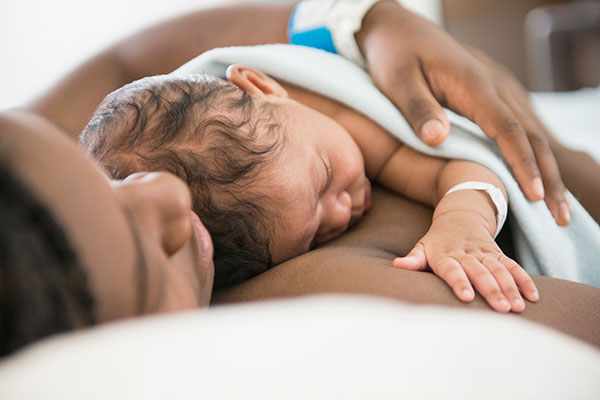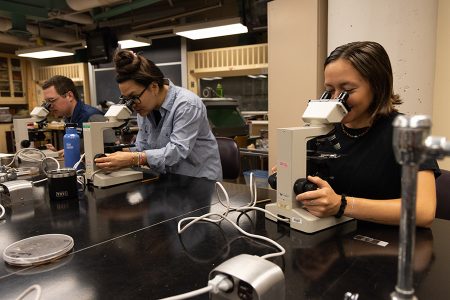Black newborns and Black doctors

In the U.S., Black newborns die at three times the rate of white newborns. But research from Associate Professor Rachel Hardeman shows that the in-hospital death rate for Black newborns is a third lower when they’re cared for by Black physicians.
The study, which included researchers from Harvard and George Mason Universities, also found that the benefits of being cared for by a Black physician was particularly strong in instances when babies had more complicated cases and in hospitals that deliver more Black newborns. Hardeman estimates that the care of Black physicians prevents in-hospital deaths of approximately 1,400 Black newborns in the U.S. each year.
“Our findings demonstrate that when newborns and the physicians treating them are of the same race, that newborn survival rate is significantly improved,” says Hardeman, the Blue Cross Endowed Professor in Health and Racial Equity. “This study is the first piece of evidence that demonstrates the effect of physician-patient racial concordance on the Black-white mortality gap. As we seek to close persistent racial gaps in birth outcomes, this finding is incredibly important.”
Physician Gender Pay Gap

Research consistently shows that female physicians earn up to 30% less money than their male counterparts. A study by Associate Professor Hannah Neprash delved deeper into the issue and found that female primary care physicians (PCPs) generate less revenue for clinics and practices because they spend more time with patients and have less time for additional appointments compared to their male colleagues. The finding dispels the commonly held opinion that female physicians work fewer hours than men.
Female PCPs also placed more orders and documented more diagnoses compared to male PCPs.
Female physicians burn out at a higher rate than their male counterparts. The disconnect between time spent and revenue generated may be one explanation. To avoid burnout, healthcare organizations and policymakers could consider paying physicians for something other than productivity or better compensating physician time as an essential component of medical care.
Differentiating Dementias

Dementia is a progressive, incurable disease, but correctly distinguishing between Alzheimer’s and other causes of dementia may be important in the future when treatments may work differently or more effectively for certain types of disease. To make diagnosis easier, researchers from SPH’s Minnesota Evidence-Based Practice Center conducted a review of medical literature on the accuracy of biomarker testing, such as brain scans and the analysis of body fluid samples, for identifying Alzheimer’s in older adults with dementia. Overall, they found that biomarker testing showed promise because the addition of certain brain imaging and cerebrospinal fluid (CSF) tests to a clinical evaluation may improve the accuracy of clinical diagnosis.
Plant-centered diet lowers diabetes risk as young adults age)
A new study from PhD student Yuni Choi found that young adults who ate an increasingly high quality plant-centered diet lowered their diabetes risk by up to 48% and gained less weight by middle adulthood. The effect was found to be true even for people who had poorer diet quality earlier in life.
As Opioid Deaths Decrease, Other Drugs Move In
For nearly two decades, the U.S. has seen significant increases in overdose deaths directly from, or related to, opioids. But the UMN State Health Access Data Assistance Center (SHADAC) found that between 2017 and 2018 deaths from psychostimulants — predominantly methamphetamine — surpassed those from prescription opioids for the first time in the history of the opioid crisis. These deaths increased by an astounding 22.1% in a single year to reach record highs. The study also found that increases in deaths from psychostimulants were widespread across almost all demographic groups, including all ages of adults except 18-24 year olds; all races/ethnicities; all levels of urbanization; and all genders.
Deaths in the Family
PhD student Naomi Thyden conducted a study to figure out who among young adults are most likely to experience the death of a family member and how it relates to their ability to obtain a college degree. Thyden found that Black and Native American adolescents (ages 13-18) and young adults (ages 19-22) were about 2-3 times more likely to have lived through the death of a close family member than white participants. The study also revealed that young adults who were college-aged when a sibling or parent died were about half as likely to graduate from college. Individuals who were high school-aged when a sibling or parent died seemed to be less affected when it came to graduating from college.


